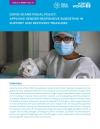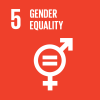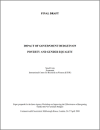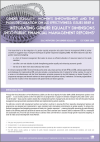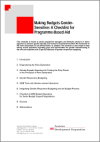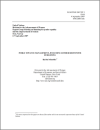FOUND 13 RESULTS
Since the start the COVID-19 pandemic, almost USD 16 trillion has been pumped into the global economy, and governments are now rolling out second and third phases of support. With the introduction of vaccines, some countries can begin to get the pandemic under control and start investing in recovery. Most countries, however, are still grappling with the pandemic’s immediate health and socio-economic fallout, including its outsized impact on women. While the adoption of policy measures to prevent or respond to the surge in violence against women is more widespread, the social protection and jobs response has not adequately supported women’s economic security nor addressed care work or the financing of care services. This policy brief presents entry points for the application of gender-responsive budgeting to COVID-19 support and recovery packages. Drawing on country examples, this brief provides recommendations on the use of gender budgeting tools to identify gaps in policy responses and direct spending towards gender responsive COVID-19 measures.
Sustainable Development Goal (SDG) Indicator 5.c.1 “Proportion of countries with systems to track and make public allocations for gender equality and women’s empowerment” has been recently reclassified as Tier II by the Inter-Agency Expert Group on SDGs. The indicator measures progress towards Target 5c of the SDGs to “adopt and strengthen sound policies and enforceable legislation for the promotion of gender equality and the empowerment of all women and girls at all levels”. It links the policy and legal requirements for gender equality with resource allocations for their implementation. By tracking resource allocations, governments introduce deliberate measures into the planning and budgeting cycle to meet their gender policy objectives such as eliminating gender based violence or increasing women’s employment. By making these allocations public, governments commit to higher levels of transparency and accountability in budget decision making.
Since the start of the COVID-19 pandemic, almost USD 16 trillion has been pumped into the global economy, and governments are now rolling out second and third phases of support. With the introduction of vaccines, some countries can begin to get the pandemic under control and start investing in recovery. Most countries, however, are still grappling with the pandemic’s immediate health and socio-economic fallout, including its outsized impact on women. While the adoption of policy measures...
Paper discussing the definition and measurement of Sustainable Development Goal (SDG) Indicator 5.c.1 (reclassified to Tier II) and discussing the relationship of SDG Indicator 5.c.1 with other Indicators.
This paper provides guidance on how to make Public Finance Management (PFM) reforms gender responsive. It presents an overview of PFM reforms and explains how and why they are important to the achievement of gender equality outcomes. The paper aims to link ongoing work on gender responsive budgeting (GRB) with broader PFM reform efforts by increasing understanding of GRB among PFM practitioners and increasing understanding of PFM reforms among gender experts to support better results for gender equality and women's empowerment.
In this paper, Simel Esim (2000) focuses on expenditure and revenue instruments of fiscal policy as strategic entry points for engendering macroeconomics. The paper also includes a discussion of the potential implications of monetary policy and overall fiscal stance on poverty and gender equality.
This paper by Simel Esim (2000) explores the revenue side of gender budgeting. Esim also discusses policies and suggests strategies for gender-sensitive budgeting.
This Issues Brief published by the DAC NETWORK on Gender Equality in October 2010 is on the integration of a gender equality perspective into public financial management (PFM) in partner countries. It suggests ways of using the techniques of gender-responsive budgeting (GRB). The Brief makes the case that gender responsive budgeting: is a form of financial management that seeks to ensure an efficient allocation of resources based on the needs identified can offer a win-win situation by both...
This checklist is meant to assist programme managers and thematic advisors in donor agencies to advance gender equality and women's empowerment within the framework of the Paris Declaration on aid effectiveness. It is also meant to help in asking crucial questions regarding gaps and opportunities for gender mainstreaming in the new aid modalities with a special emphasis on gender responsive budgeting. The document was published by the Austrian Development Cooperation in 2009.
This paper explains what GRB is, what GRB work has help achieved and how it can further contribute to achieving gender equity and equality. The paper also presents some of the challenges of doing GRB work and concludes with a set of recommendations to institutionalize a gender equality perspective in public finance.
